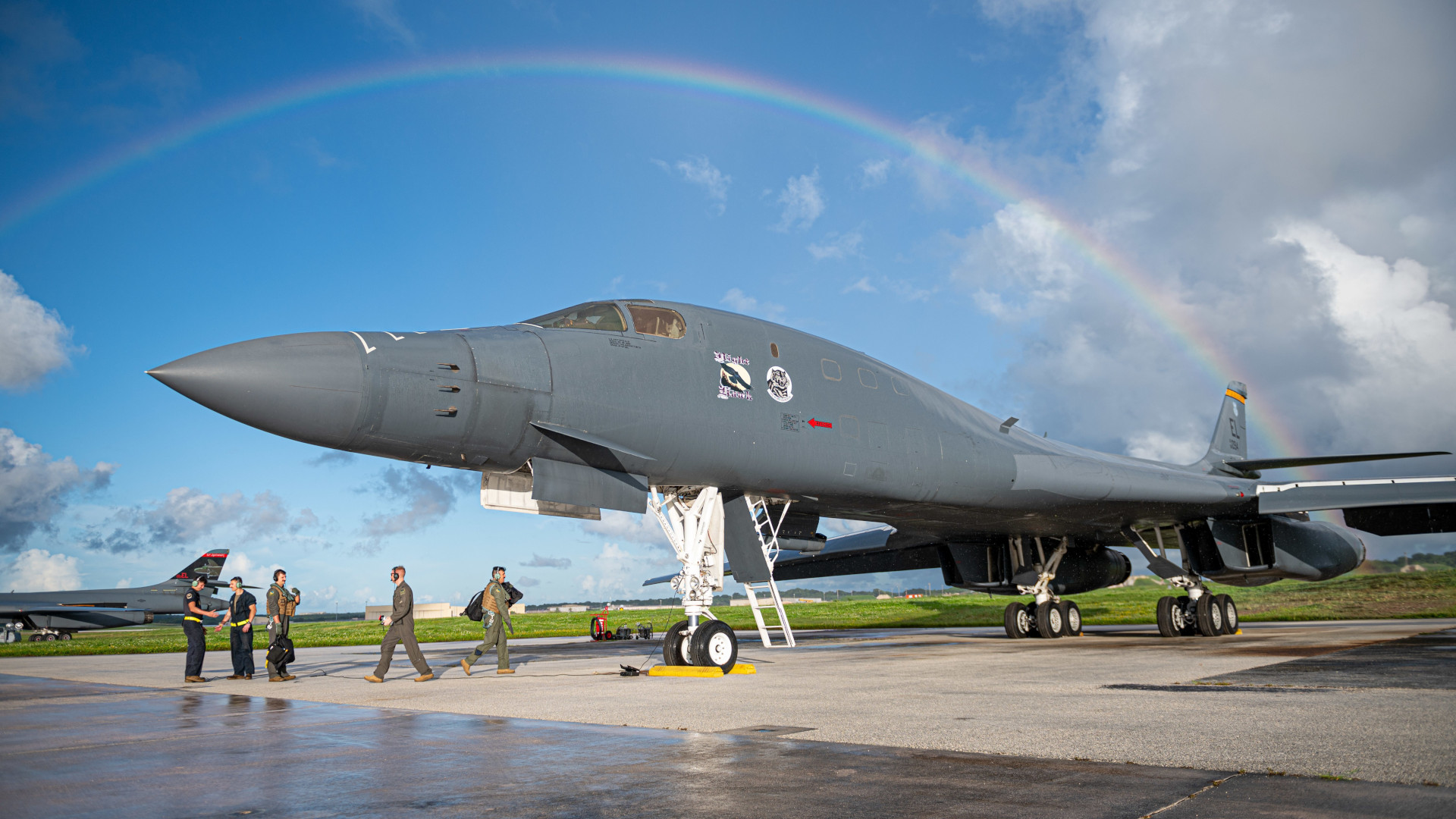The U.S. Air Force’s B-1 bomber community has become primarily focused on executing very long-range land-attack and anti-ship strike missions utilizing stand-off cruise missiles as the supersonic swing-wing jets steadily enter the twilight of their careers. These sorties, which increasingly include non-stop flights to and from bases in the United States that can last nearly 40 hours, point to the kinds of operations the service likely expects to conduct with its new B-21 Raider stealth bombers. The B-21, the first of which was just unveiled to the public earlier this month, is set to fully replace the B-1B, as well as the B-2 Spirit stealth bomber, by the middle of the next decade.
Air Force Col. Joseph L. Sheffield, commander of the 28th Bomb Wing, and Lt. Col. Christopher D. McConnell, head of the Wing’s 37th Bomb Squadron, provided details and insights into current B-1 operations and how the community is preparing for the transition to the B-21 during a virtual discussion hosted by the Air and Space Forces Association on December 12. The 28th Bomb Wing is based at Ellsworth Air Force Base in South Dakota, where the first operational B-21s will be based. The Air Force currently expects to begin fielding the new Raiders by the middle of this decade and to retire its last B-1Bs by 2036.
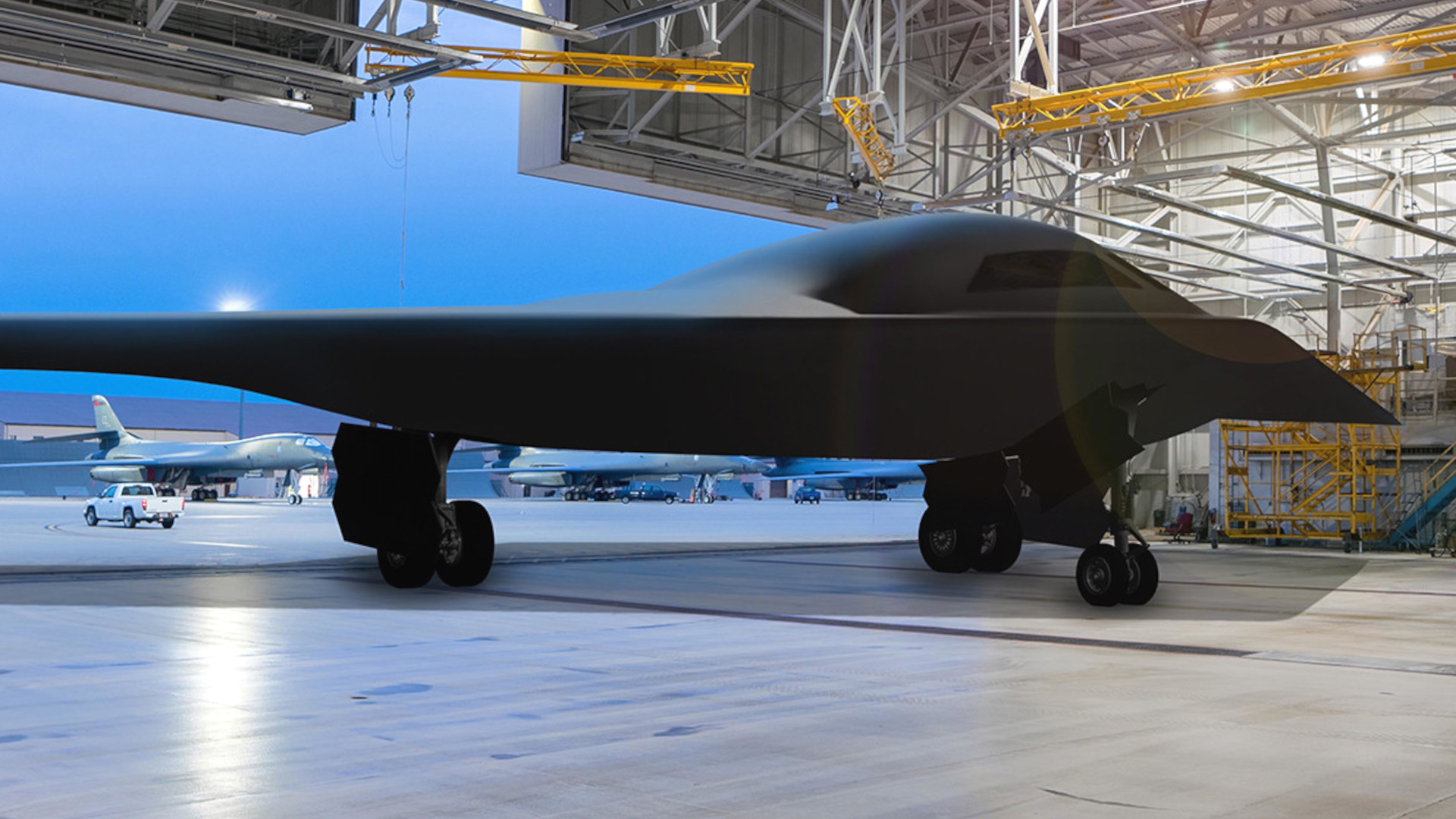
So-called “CONUS-to-CONUS” operations, referring to the continental United States and, in the case of the 28th Bomb Wing, of sorties non-stop to and from Ellsworth, “really have become some of our bread and butter aspects of what we do,” Col. Sheffield explained. “We see it [as] important not only for training and for integration [with other branches of the U.S. military and allies and partners] … but also really for combat.”
On one of these missions, “we typically execute some type of mission integration exercise, sometimes multiple on a sortie and sometimes in multiple AORs [areas of responsibility],” Sheffield continued. The flights are generally “in the 20-plus hour” range and can take the B-1Bs “anywhere around the globe, and then [they] recover back home.”
The 28th Bomb Wing’s commander noted that in some cases these flights can last more than 30 hours. Lt. Col. McConnell, the head of the 37th Bomb Squadron, said that the longest duration sorties his unit had conducted had seen B-1Bs and their crews remain airborne for around 37 hours.
These extremely long sorties require significant aerial refueling support. “On one of these long duration sorties” lasting around 24 hours, “you’re doing four air refuelings,” Col. Sheffield stated.
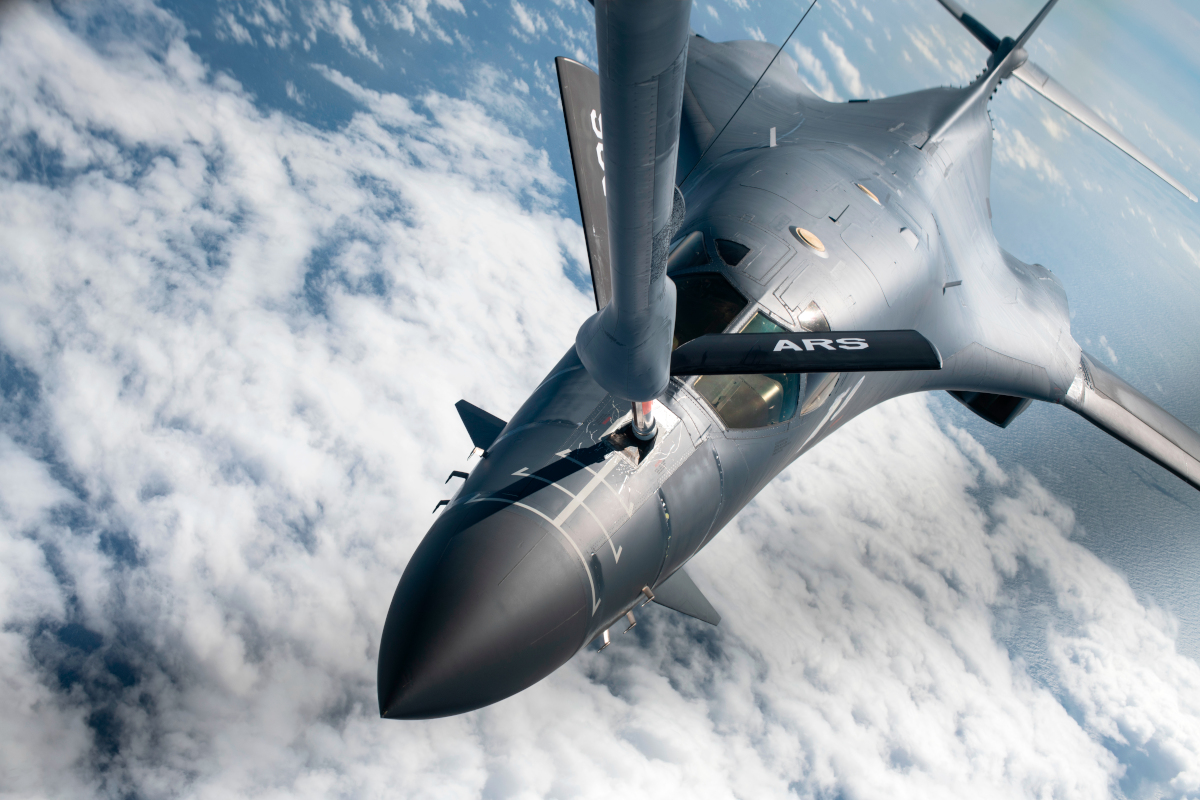
“Our aircrew are gaining the confidence [to conduct these long-range missions] because they’re doing it, they’re doing it on a regular basis,” Lt. Col. McConnell said. “They’re able to link up with a tanker in the middle of the ocean at night. It’s hour 20 of your sortie, you get 100,000 pounds of gas, and you’re continuing on, whether or not that’s going to be to go exercise in the theater where you’re traveling into, or to get the aircraft back home safely so we can turn it and do it again the next day.”
In addition, B-1B crews are increasingly training to conduct operations from or otherwise make refueling stops at various bases not traditionally associated with bomber operations. Just in November, a B-1B bomber from the 28th Bomb Wing landed and conducted a hot pit refueling, meaning the aircraft’s engines remained on the entire time, at Misawa Air Base in Japan as part of a temporary deployment in the Pacific region.

These temporary deployments, now generally referred to as Bomber Task Force operations, and stopovers are in line with the Air Force’s new service-wide Agile Combat Employment (ACE) concepts of operations, which also involve the B-2 and B-52 bombers, among a host of other aircraft types, as well. ACE is centered heavily on expeditionary and distributed deployments conducted at irregular intervals to an expanding number of bases around the world to make it more difficult for opponents to predict these movements and, as a result, reduce the vulnerability of friendly forces, as you can read more about here.
ACE is intended to mitigate the increasing vulnerability of large, established bases, the locations of which are well-known, to stand-off strikes, especially in a high-end conflict against a potential peer or near-peer adversary, such as China.
That being said, Col. Sheffield did highlight the continued importance of strategic bases like Diego Garcia, a British island territory in the Indian Ocean that hosts a major U.S. air base and other American military forces. In October 2021, B-1Bs from the 28th Bomb Wing became the first of these bombers to deploy to Diego Garcia since 2006.

CONUS-to-CONUS sorties, of course, eliminate the vulnerabilities that come with bombers having to operate anywhere in a theater at all. That being said, forward bases could still be used for rearming and refueling and would offer options to divert to in emergencies or if otherwise required, all helping to keep the enemy off balance by making bomber sorties unpredictable.
“We think we need to be ready to fight here from Ellsworth,” Sheffield said. “I think it’s critically important, and we talk to our operators and maintainers, and our support personnel, to approach work at Ellsworth as though they are in the area of responsibility.”
All of this is part of a major shift in how the Air Force conducts bomber operations, in general, that has been ongoing in the past few years. This notably included the end of regularized bomber deployments to Guam in 2020, which The War Zone was first to report.
The changes have already had significant impacts on the B-1 community specifically after some two decades of heavy employment supporting conventional combat operations in Afghanistan, Iraq, and Syria. Those deployments had pushed the aircraft literally to their breaking point. As a result, the Air Force decided to bring low-level B-1 flight operations to an end, in large part because of the physical strain such sorties placed on the aircraft, another development The War Zone first reported on. The B-1B had been designed with a core focus on low-altitude, high-speed operations.
During the online discussion Monday, Col. Sheffield and Lt. Col. McConnell further emphasized that the 28th Bomb Wing is now very focused on employing stand-off cruise missiles against very large volumes of targets in the context of these long-range operations. The B-1B’s main weapons in this regard are variants of the stealthy AGM-158 Joint Air-to-Surface Standoff Missile (JASSM) and the AGM-158C Long Range Anti-Ship Missile derivative.
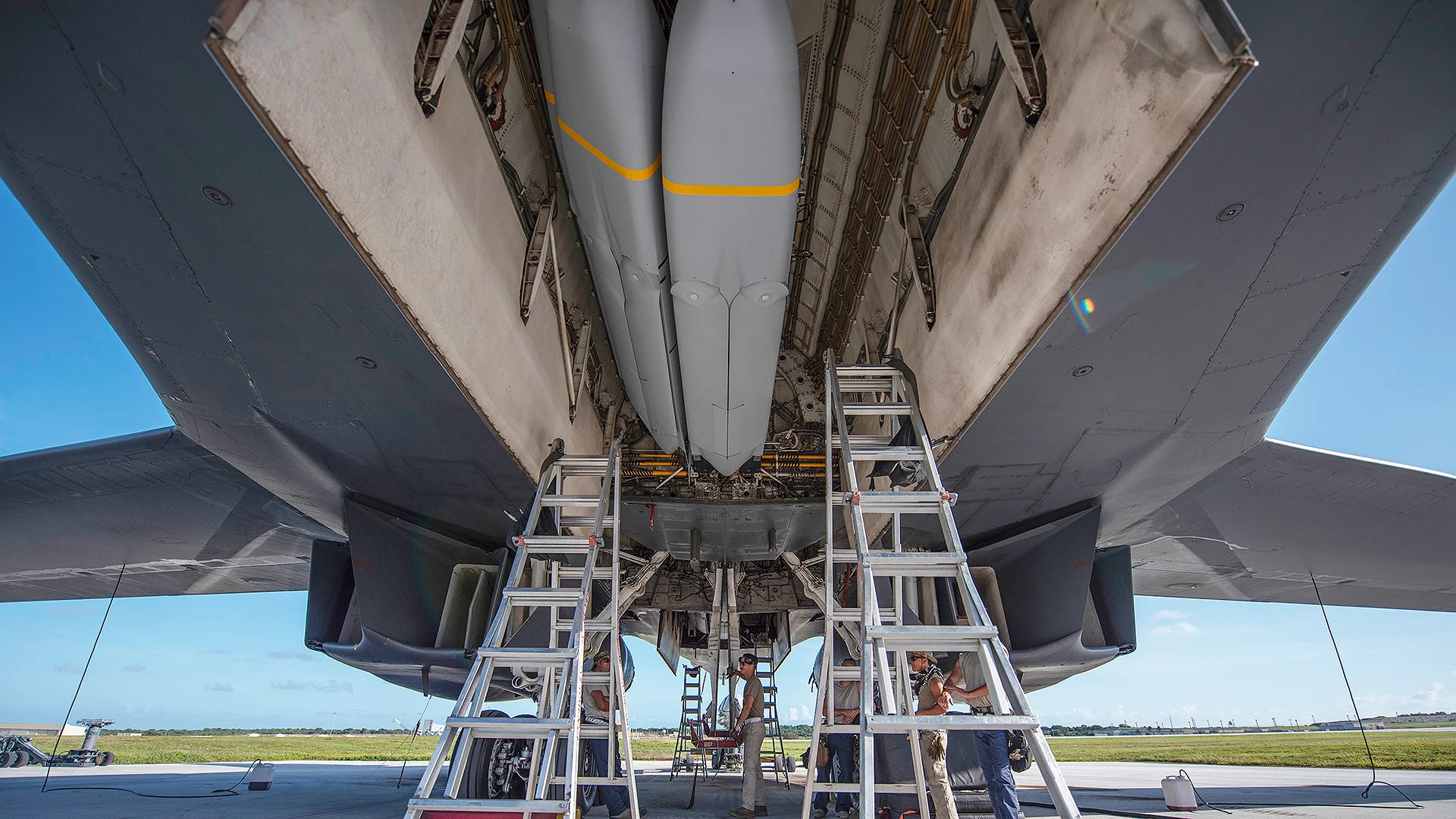
“We have the largest JASSM payload of any platform, the fact that we can carry 24 of those weapons. We’re the only Air Force asset right now that can carry an employ LRASM,” Lt. Col. McConnell highlighted. “We want our aviators to be the … experts in employing all of those weapons.”
Col. Sheffield pointed out that B-1Bs are set to be able to carry 36 JASSMs, among other weapon loads, in the future with the planned restoration of the bomber’s ability to carry munitions on external pylons. The Air Force has separately talked about integrating new, longer-range weapons onto the B-1B, including future hypersonic missiles.

“For our normal training here, we’re consistently focusing on being ready to employ [weapons] either against 48 targets, 96 targets, whatever it is,” McConnell added. “If it’s a two-ship of B-1s that are going out and executing, they’re going to be ready for 48 targets. If it’s more aircraft than that they’re gonna be ready for 96.”
In addition, Lt. Col. McConnell highlighted the B-1Bs secondary roles as a non-traditional intelligence, surveillance, and reconnaissance (NTISR) aircraft and as a node for sharing targeting information with other platforms. This is thanks to various upgrades and modifications the bombers have received over the past two decades or so, including the integration of the Sniper Advanced Targeting Pod (ATP) and a Link 16 datalink.

“It’s a fully glass cockpit integrated airplane now. It’s got Link 16. It’s got to beyond-line-of-sight data links that we can use to update targets [in] real time,” McConnell explained. “We can use our sensors to help find and fix targets, and pass those [details] on to other assets.”
In September, B-1B bombers assigned to the 7th Bomb Wing at Dyess Air Force Base in Texas – another location that is set to host B-21s in the future – flew a CONUS-to-CONUS mission where they conducted NTISR off the coast of the South American country of Ecuador in support of a multi-national counter-illegal fishing effort that you can read more about here. B-1Bs have also flown NTISR sorties in the past from Naval Air Station Key West in Florida in support of counter-drug operations in the Caribbean.
“Using our sensors to go out and … provide NTISR, which is non-traditional ISR capabilities, to provide targeting in that fine and fix phase, we can do that and then pass that information back … in order to provide dynamic targeting,” McConnell added. “To build that mindset, when we take off for a sortie, we know that our targets are probably going to change at some point, or we’re at least building that mentality into our aircrew of there’s the potential and the high probability that you’re going to have to dynamically retarget some of those things.”
The B-1 community’s current focuses on very long-range sorties, stand-off weapon employment again land-based and maritime threats, and secondary NTISR and data-sharing functions are all well in line with efforts to ensure the shrinking number of these bombers remain operationally relevant through the official sunset date in 2036. B-1Bs would play important roles in any future high-end conflict, especially a potential fight in the broad expanses of the Pacific region against China, between now and then.
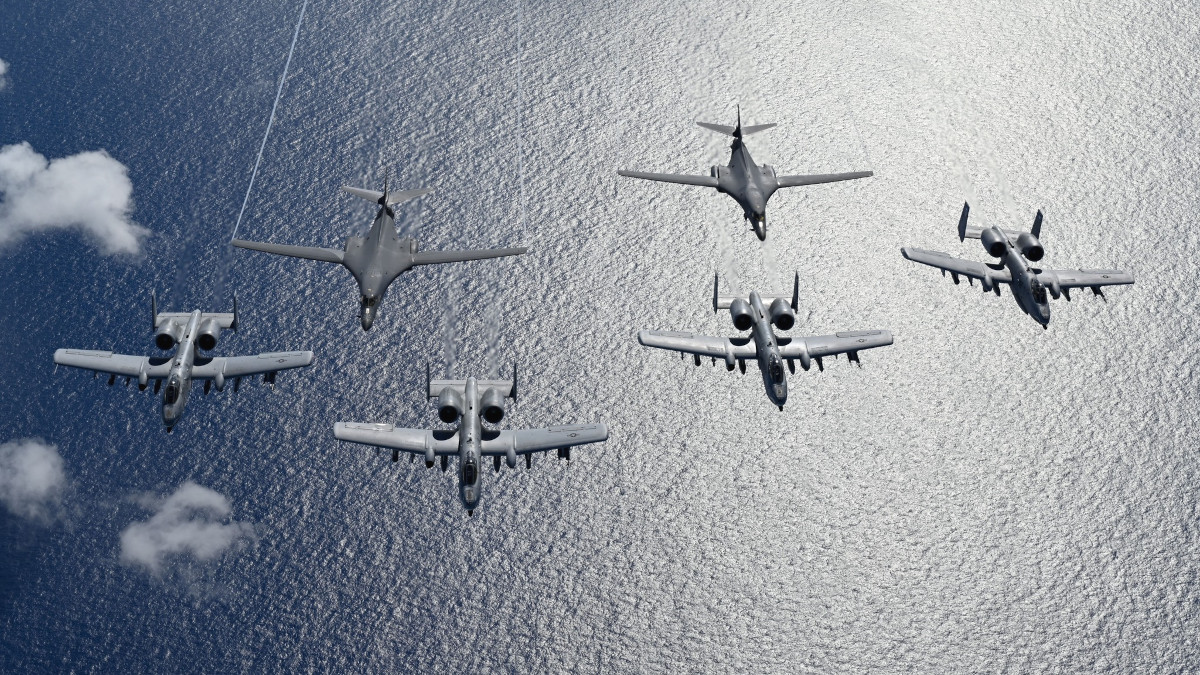
At the same time, the roles and missions, as well as capabilities, that Col. Sheffield and Lt. Col. McConnell discussed sound exactly like the things that the B-21 looks set to excel at based on what we know about the Raider so far. While details about the Raider’s performance and capabilities remain classified, in a speech he gave at the bomber’s rollout ceremony earlier this month, Secretary of Defense Lloyd Austin specifically focused on its extreme range capabilities. He further indicated that the aircraft’s range would in many cases obviate the need for overseas staging locations, pointing to an emphasis on CONUS-to-CONUS operations.
“Let’s talk about the B-21’s range. No other long-range bomber can match its efficiency,” Austin declared. “It won’t need to be based in-theater. It won’t need logistical support to hold any target at risk.”
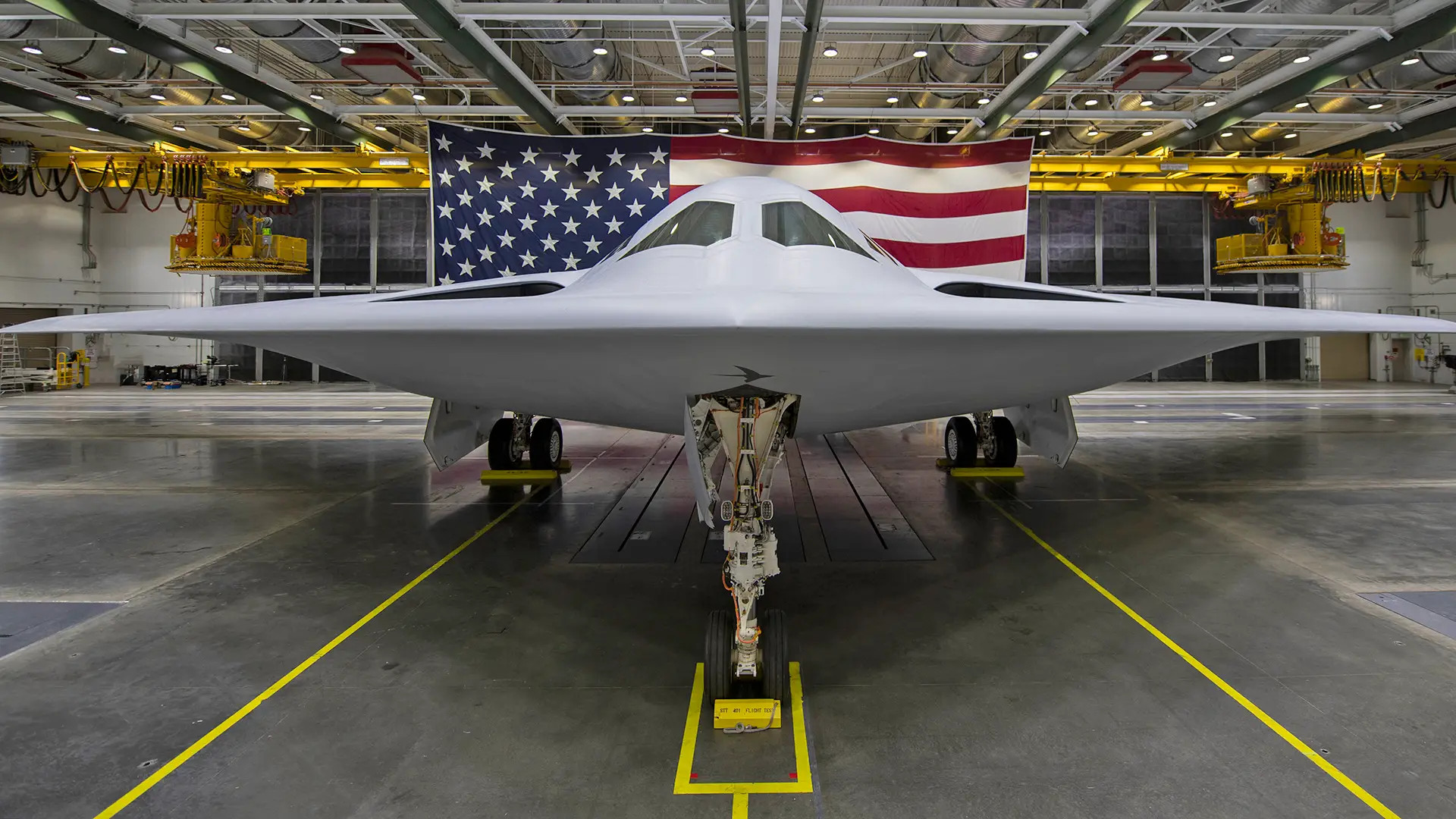
From everything we know so far, the B-21 has been designed with ultra-long-range missions in mind from the start, unlike the final B-2 design. As such, it seems probable that the Raider has advanced and highly automated resource management capabilities and improved crew comforts unlike any that have been seen on a bomber before to support these extremely long-duration flights.
The B-21 puts new emphasis on stand-off weapon employment in that it will be able, unlike its immediate predecessor the B-2, to launch nuclear-armed cruise missiles in the form of Raytheon’s still-in-development Long Range Stand-Off (LRSO) design. The Raider will, like the B-2, be able to carry nuclear gravity bombs, including the new B61-12, too. The Raider will also have the ability to fire conventional cruise missiles, such as variants of the JASSM, among other non-nuclear munitions, just like the B-1B and the B-2 can now.
The Air Force has said that the B-21 is part of a larger Long Range Strike (LRS) family of systems, much of which remains shrouded in secrecy and that could well include additional new weapons, among other things. “This bomber will be able to defend our country with new weapons that haven’t even been invented yet,” Secretary Austin had said at the rollout event.
Lt. Col. McConnell highlighting of the B-1B’s current NTISR and data-sharing capabilities can be seen in a different light given Secretary Austin’s confirmation that the B-21 will really be much more than just a bomber. The Raider “can handle anything from gathering intel to battle management,” he said at the rollout ceremony. The multi-purpose nature of the Raider is something The War Zone has been highlighting as almost certainly the case for years.
You can find out more about what is known so far about the B-21’s capabilities in The War Zone‘s analysis following the rollout of the first example here.
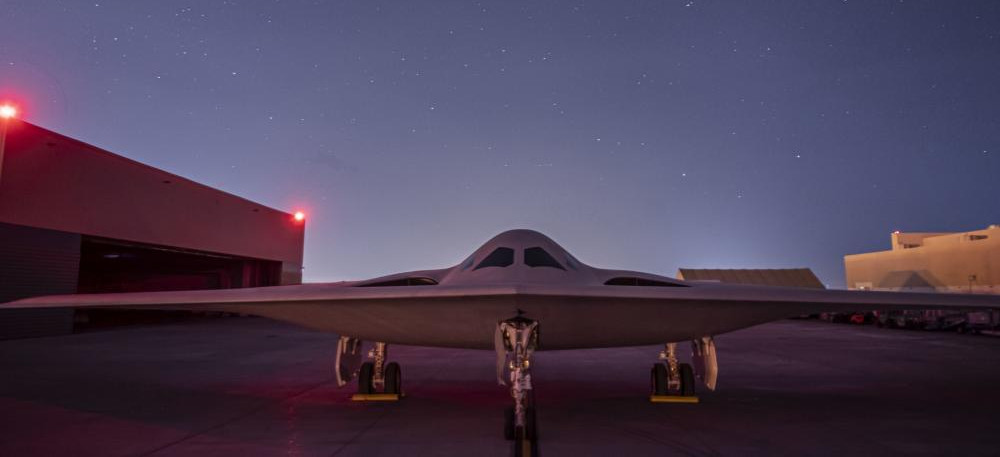
It is, of course, not surprising that the B-1 community, and the parts of it at Ellsworth, in particular, is already looking to its new future with the B-21 and how it might it expect to operate those bombers. As the first base that will receive Raiders, Ellsworth is set to host the formal training unit for these bombers, and personnel there will be instrumental in writing the book, so to speak, on these new stealth bombers. Col. Sheffield said that members of the B-52 and B-2 bomber communities, among others, would also contribute to the initial establishment of the B-21 force.
“We’re gonna have pilots flow into the B-21 from all avenues,” Sheffield said. He added that B-1 Weapon System Officers could be funneled into the training pipeline for the Raider.
Ellsworth is set to physically change in many ways as part of the transition, particularly in the construction of new highly secure storage facilities for nuclear weapons at the base, as well as security and other requirements that come along with that. Specialized facilities necessary to maintain the highly sensitive stealthy skin on the B-21s, among other unique features of those aircraft, will also be built.
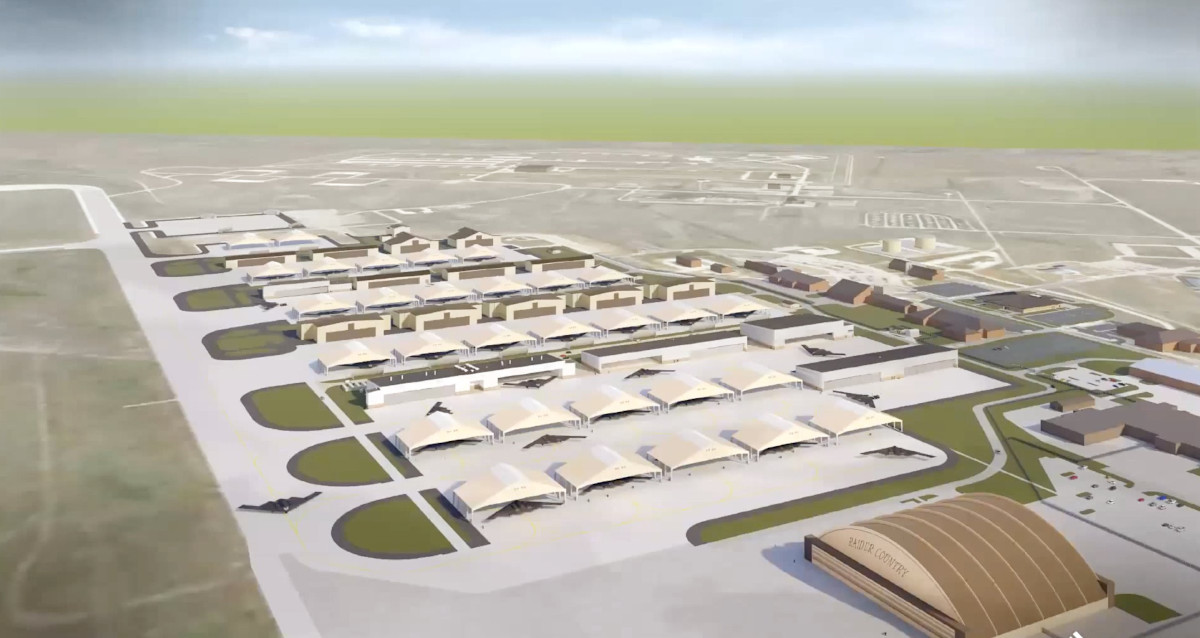

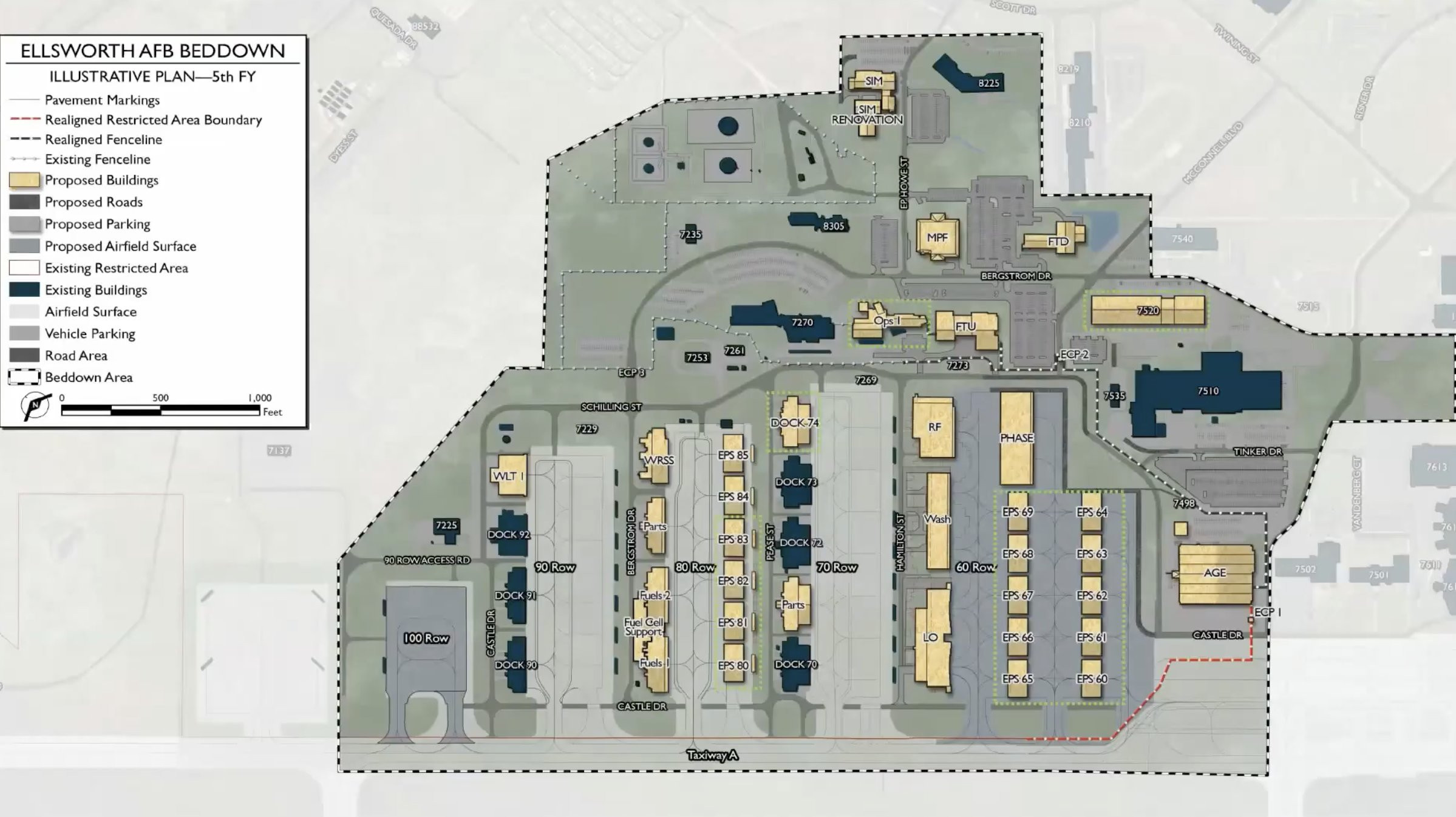
“It’s over 30 big projects. We have six that are well underway,” including the new stealth-focused maintenance hangar, according to Col. Sheffield.
All told, the 28th Bomb Wing and the rest of the B-1 community are clearly very focused on being able to continue providing important long-range strike capabilities in the near term. At the same time, the current emphasis on very long-range sorties, stand-off weapon employment, and various non-bomber functions, make equally clear that the groundwork is being laid right now for these squadrons to transition to the B-21, America’s next and most advanced bomber ever designed.
Contact the author: joe@thedrive.com
